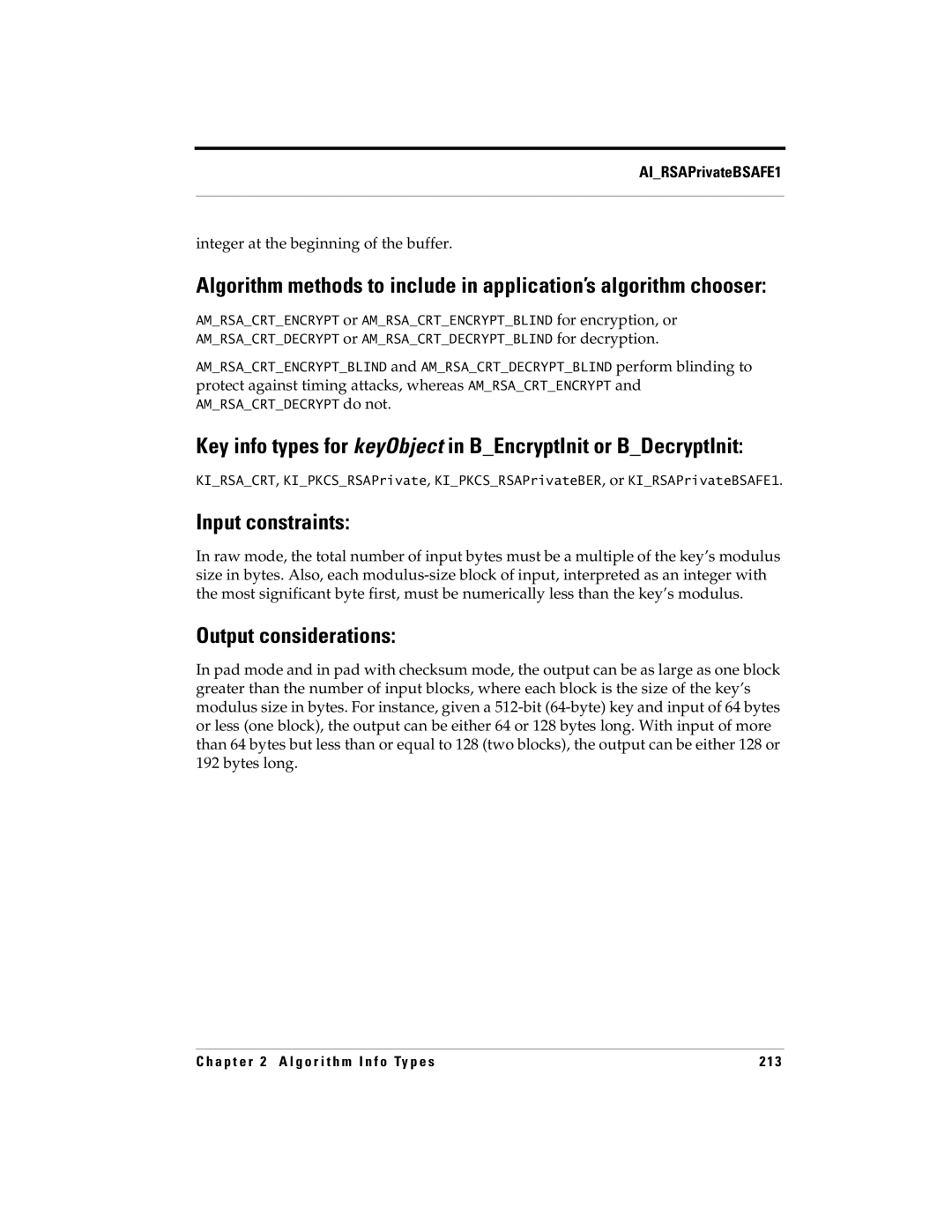
AI_RSAPrivateBSAFE1
integer at the beginning of the buffer.
Algorithm methods to include in application’s algorithm chooser:
AM_RSA_CRT_ENCRYPT or AM_RSA_CRT_ENCRYPT_BLIND for encryption, or AM_RSA_CRT_DECRYPT or AM_RSA_CRT_DECRYPT_BLIND for decryption.
and AM_RSA_CRT_DECRYPT_BLIND perform blinding to
protect against timing attacks, whereas AM_RSA_CRT_ENCRYPT and do not.
Key info types for keyObject in B_EncryptInit or B_DecryptInit:
KI_RSA_CRT, KI_PKCS_RSAPrivate, KI_PKCS_RSAPrivateBER, or KI_RSAPrivateBSAFE1.
Input constraints:
In raw mode, the total number of input bytes must be a multiple of the key’s modulus size in bytes. Also, each
Output considerations:
In pad mode and in pad with checksum mode, the output can be as large as one block greater than the number of input blocks, where each block is the size of the key’s modulus size in bytes. For instance, given a
C h a p t e r 2 A l g o r i t h m I n f o Ty p e s | 213 |
